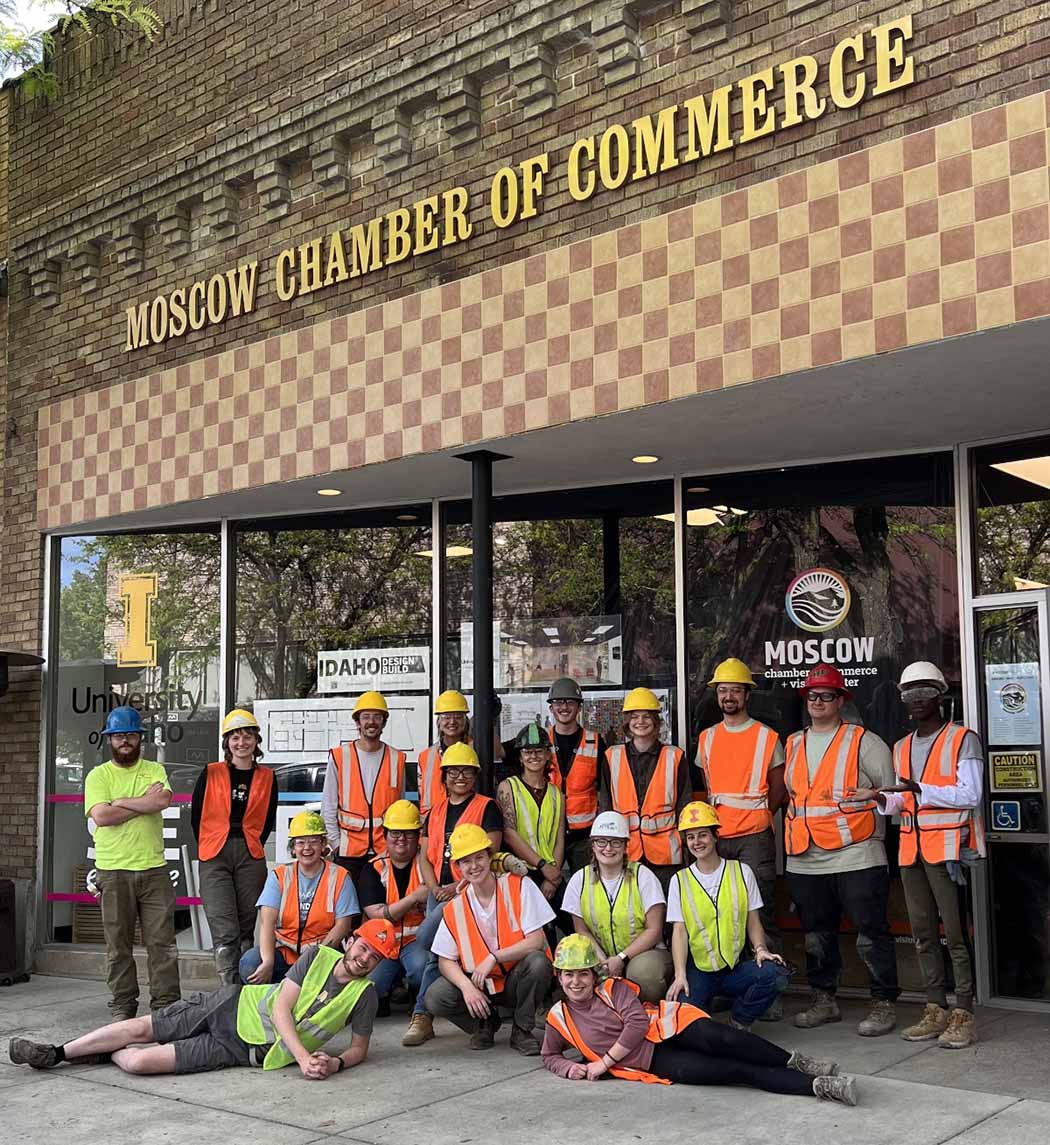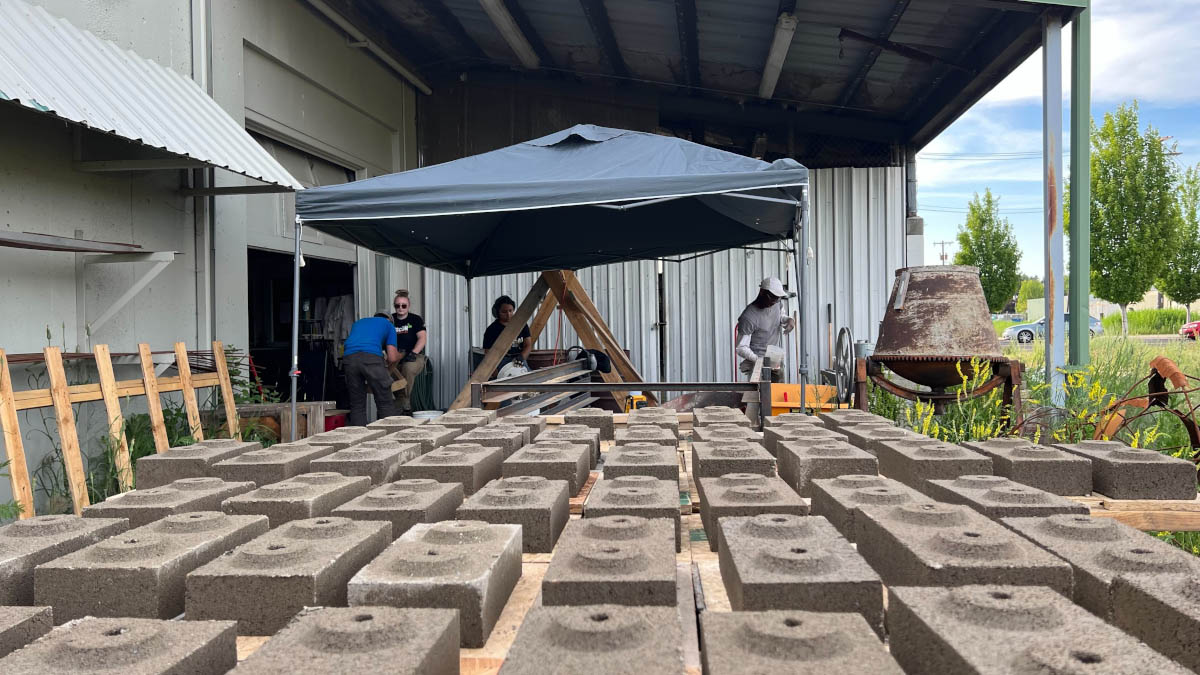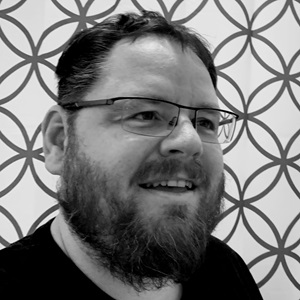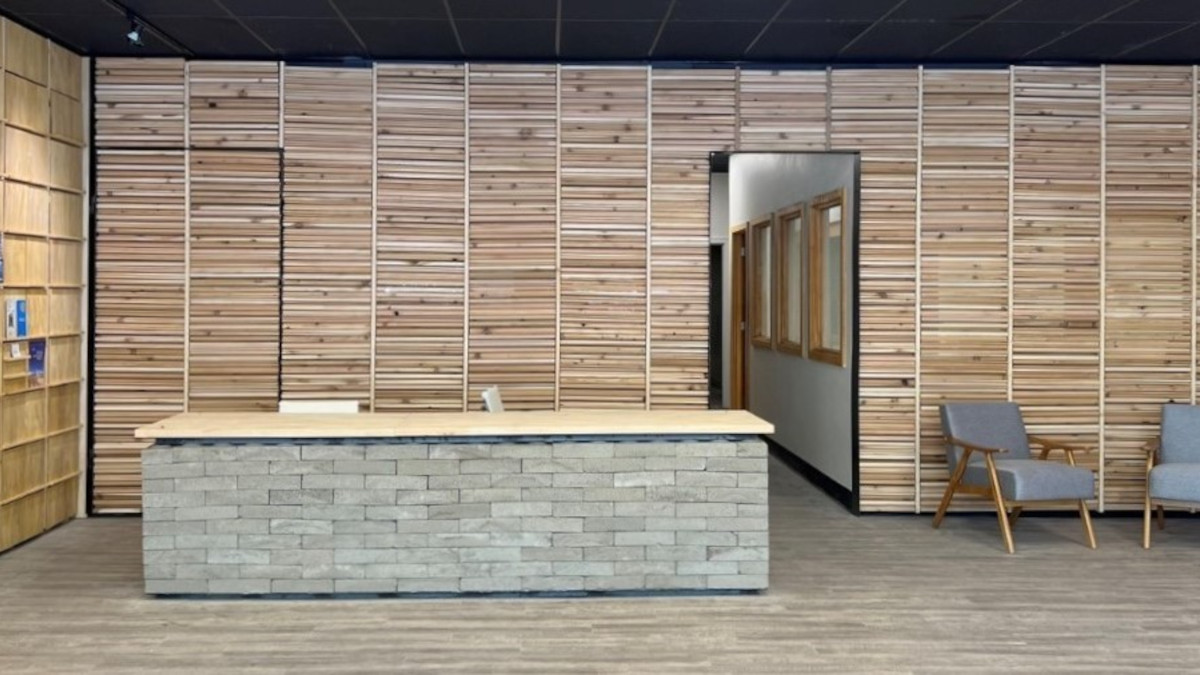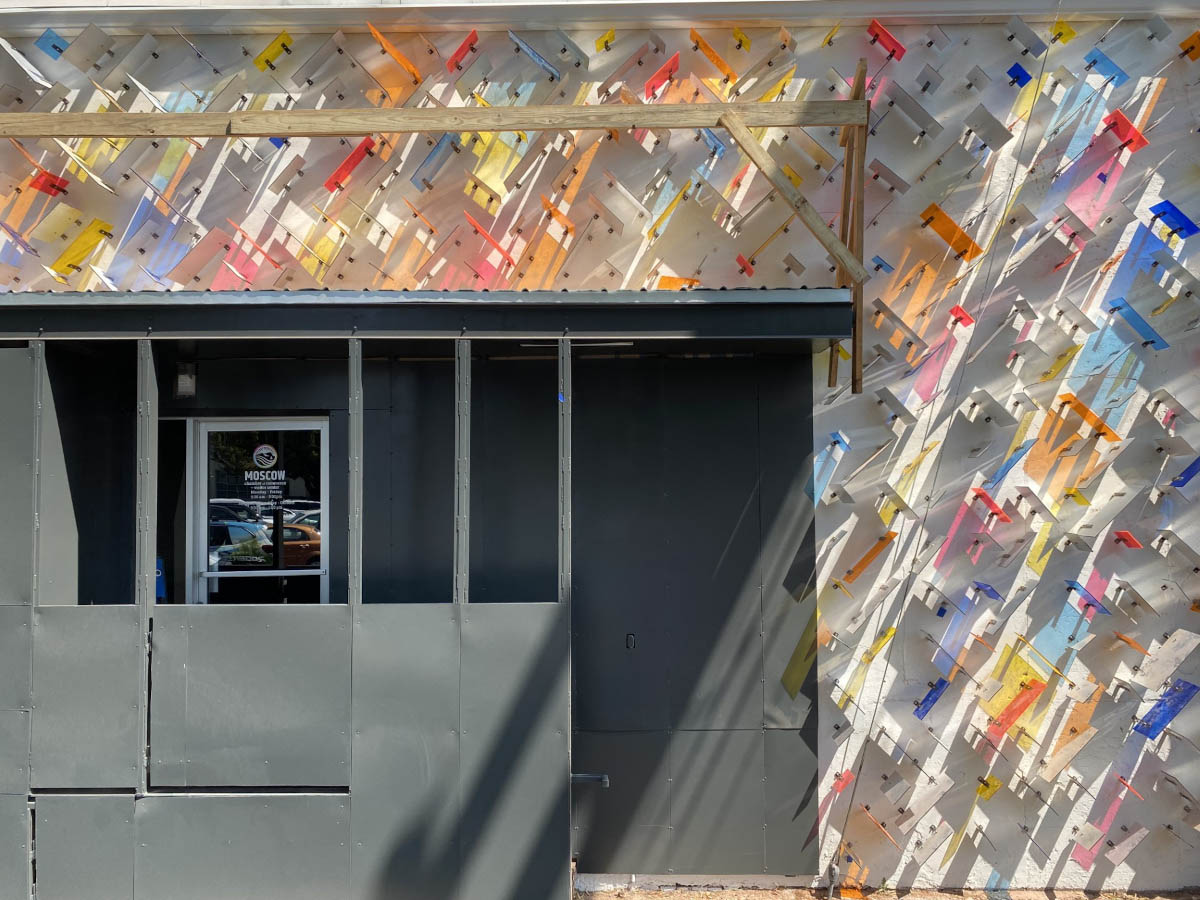From the Ground Up
CAA’s Design-Build Team Showcases Sustainability, Local Ties in Moscow Chamber Revamp
While brainstorming for ideas on how to highlight the Palouse during the remodel of the Moscow Chamber of Commerce and Visitor Center building, students in the College of Art and Architecture (CAA) Design-Build Program, led by Assistant Professor of Architecture Scott Lawrence, decided to dig deep. They delved into the rich Palouse soil, collected it and built blocks out of it.
After spending the Spring ’23 semester designing the interior and exterior overhaul of the building, Lawrence, two teaching assistants and 16 students recently wrapped up construction and the renovated space is now open to the public.
This undertaking was the latest studio course for the Design-Build Program, which allows architecture students to be involved in every step of the planning, designing and building processes. For this project, the team focused on using and making sustainable building materials to create a more functional space while making the building feel like a signature part of the community.
"Moscow used to be a renowned brick manufacturer in the early 1900s – we had three brick makers in town. So why not tell some of that story with this project?"CAA Assistant Professor Scott Lawrence
"Taking on the design of the Chamber building was a challenge because it’s often the first stop for someone coming into Moscow,” Lawrence said. “It needs to excite them about what we have to offer. The goal was to highlight what makes Moscow and the Palouse such a vibrant and unique place to live.”
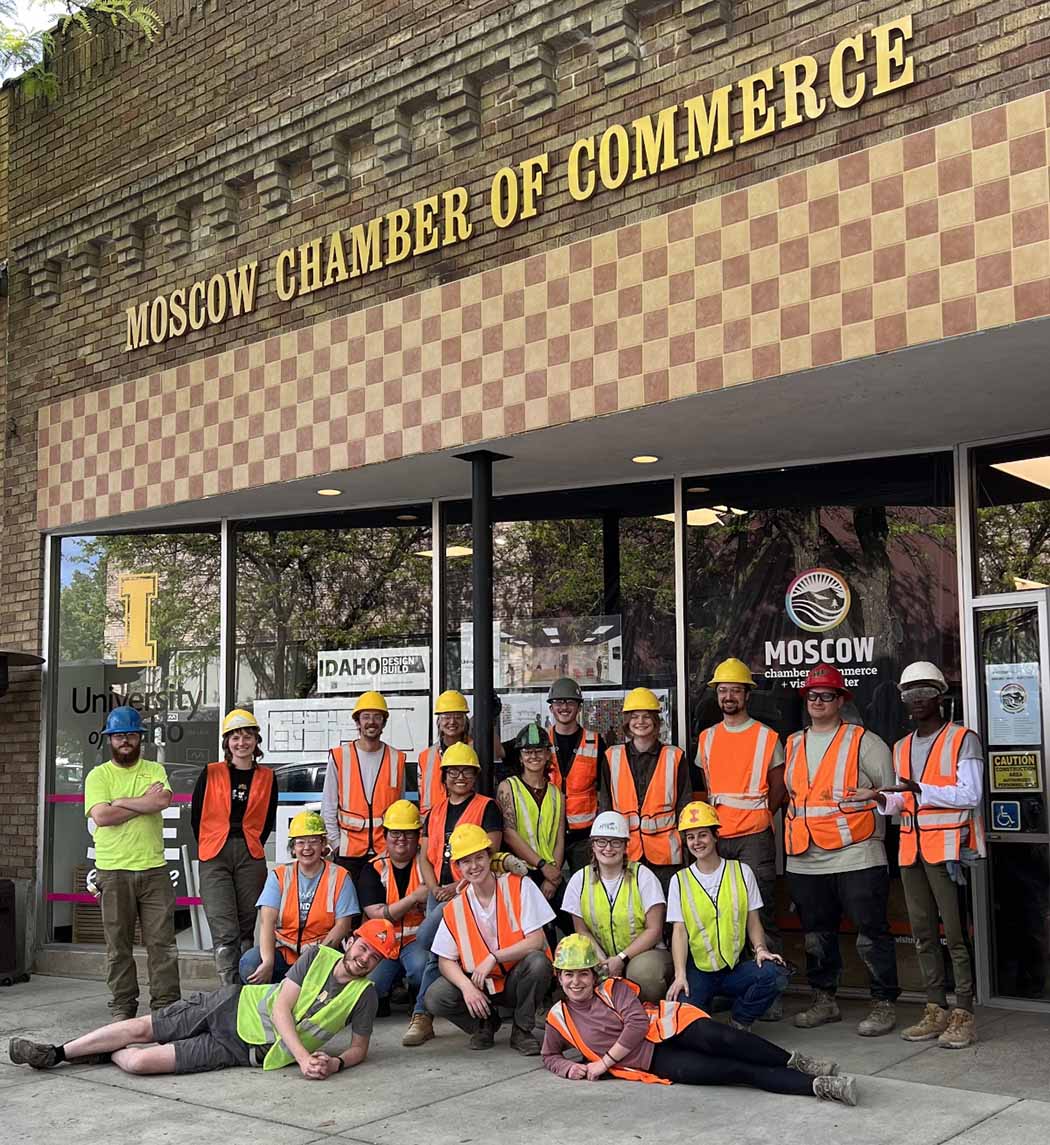
Brick and No Mortar
Out of all the highlights of the Chamber renovations, the most visible, and most versatile, are the compressed earth blocks made from Palouse soil.
Working around the clock in shifts over an eight-day period, the team made over 1,500 blocks that were used to construct the front desk in the reception area and new walls for offices in the back of the building.
“Moscow used to be a renowned brick manufacturer in the early 1900s – we had three brick makers in town,” Lawrence said. “So why not tell some of that story with this project?”
The process of making the blocks, while labor-intensive, was relatively simple: mix the correct amount of soil, sand and aggregate, put the mixture into a block mold then press down on the mold and hold for several seconds until the block forms.
Once properly cured and ready to use, the blocks are stacked on top of each other and do not need to be connected with mortar, which means they could be unstacked and reconfigured into a different design if desired.
Compressed earth blocks are not a common building material – when used, they are used mostly for exterior applications – but because of their sustainable nature and lifespan, they could become more popular.
“They have no organic material, they have a great fireproof rating and a great soundproof rating,” said graduate student Madeline Smith. “There’s been tests done on them where they’ve kept them in jars of water over a period of time and the blocks maintain their strength. They can last for decades.”
The biggest obstacle the team faced was realizing not only were they going to have to make 1,500 blocks – they were also going to have to make the machine to make the blocks. Because the blocks are not a widely used material, the team was not able to find many block presses for sale. And the ones they did find cost almost as much as their budget for the whole project.
Led by senior Ezrie Anderson, the group researched and developed a unique keyed press design of their own that would work for interior walls.
“We just designed it ourselves,” said graduate student Karl Hunt. “We got the metal, cut it up and welded it all together. We even created a manual for it and instructions on how to make the blocks.”
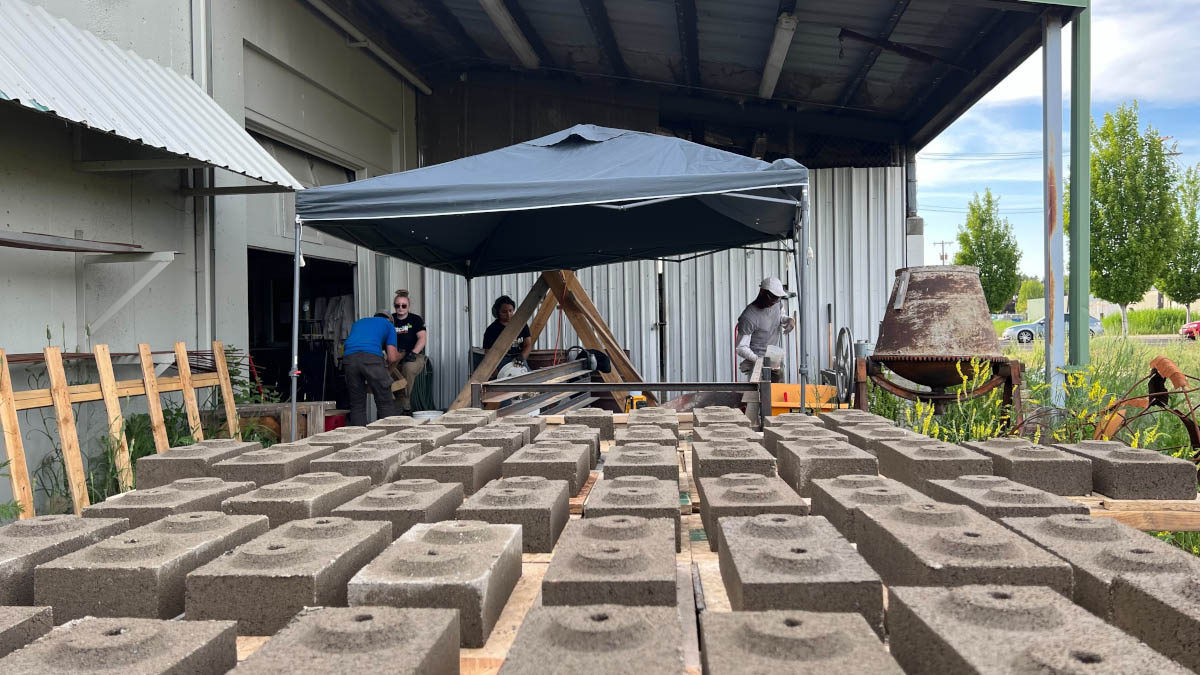
Making It More Moscow
The first thing that catches the eye when walking through the front entrance of the new space are the focus walls on either side of the main hallway. The walls not only feature a very unique design, but they also have a direct connection to the city’s largest employer – University of Idaho.
“We salvaged the tongue and groove lumber from waste from the exterior of the ICCU Arena,” Lawrence said. “The students cut the pieces in half, then sanded them by hand and placed them in the wall to create a randomized pattern.”
The project’s connection to U of I doesn’t end with salvage from the ICCU Arena. The team was also able to repurpose flooring previously used by Vandal basketball teams when they played at the P1FCU Kibbie Dome. Because that material is no longer needed, it’s being used as worktops in Chamber offices.
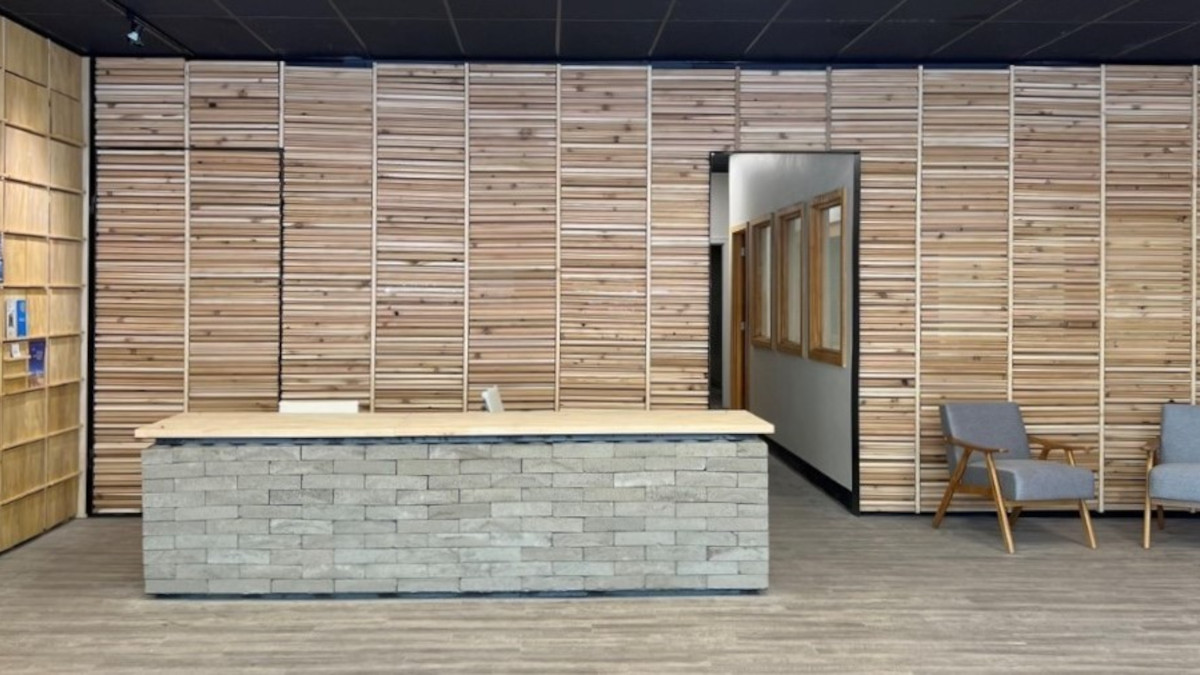
Another part of the building that looks completely different is the back entrance. The team constructed steel beams and placed them around the back stairs, then attached sheet steel to make walls. An awning was then set over the entry, thus weatherproofing the area.
The team also set up a projector in the ceiling of the awning so the Chamber can display their logo and other messages to people approaching from the parking lot area behind the building.
“The messages can be completely customized by the Chamber staff,” said graduate student Matt Weigand. “People walking by and people in the parking lot will be able to get information about upcoming events.
The old, weathered Chamber logo, which was peeling away from the back exterior wall, has been replaced by a light mural made of almost 500 anchor clips holding 300 aluminum and acrylic fins designed to reflect sunlight. Because the fins are made of different colors, the idea was to create a design that will change throughout the day due to the changing angle of natural light.
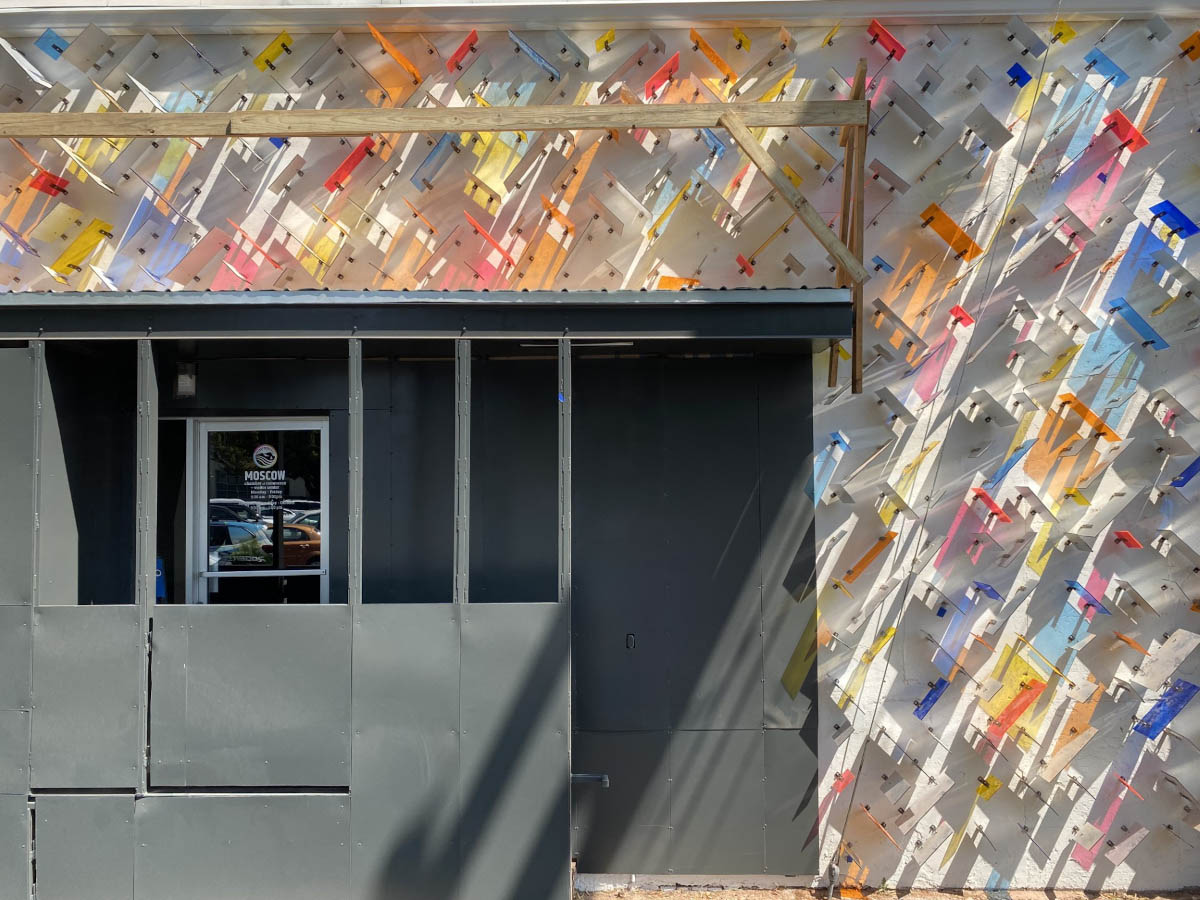
Article by David Jackson, University Communications and Marketing.
Photos by University of Idaho College of Art and Architecture.
Published in August 2023.







